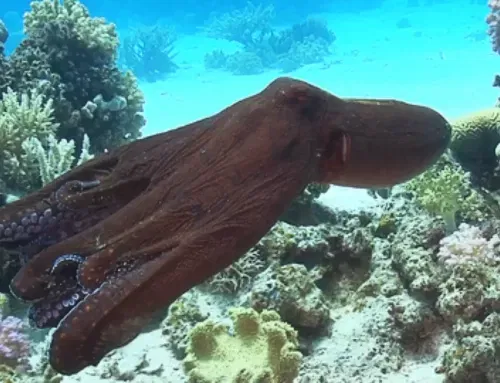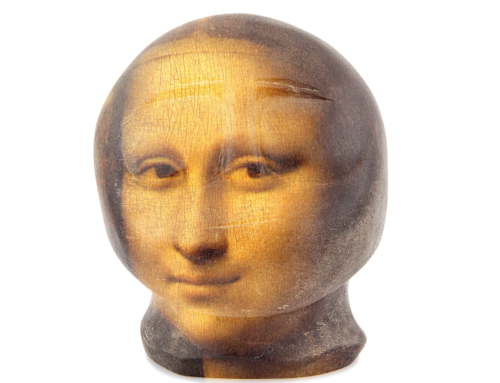Despite their differences, a pristine landscape, a colorful parrot, a flawless ballet, a concert by a virtuoso musician, a painting by Rembrandt or Renoir, or simply e=mc2 are each beautiful in their own way. There’s no need to define beautiful. We know what it means. Everyone has seen it or heard it or felt it at some time or other, and in most cases, very often. Beautiful is both personal and universal, and it defies satisfying explanation, even if the beauty is in the words themselves, such as a passage by Shakespeare.
I tell in my memoir how I was exposed to beautiful already as a little boy, when my cellist father asked me whether I liked the chamber music he and Jascha Heifetz, the world-renowned violinist, played in our home to usher in the New Year.
“It was beautiful,” I said. I knew exactly what I meant with this one word description. The music was beautiful.
Beautiful borders on magic, since it’s so ephemeral and transforming, and yet it has no substance – mere air. Beauty can’t be held. I touch on this magical quality as a scientist in my memoir.

Video art via Giphy
Even when I was a fully engaged scientist, science remained tinged with magic. When I peered at the clear night sky, I thought of space, time and black holes, but at the same time I fixed my gaze on stars that sparkled as if within reach, belying that their light had traveled unimaginable distances even after they had been extinguished millions, if not billions, of years ago. Unreachable dead stars that danced before my eyes – light from darkness – so remarkable that it bordered on fantasy. That was magic.
I started my career with the idea, influenced by my father’s romantic view of science, that truth and beauty are synonymous. I abandoned that view for Charles Darwin’s natural selection – survival of the most adapted species – the accepted driving force of evolution. Evolution was about how it works, not how it looks.

Photo by Nancy Goor
But still, I wondered, why is the natural world so beautiful, exemplified dramatically in the photos of insects and birds by my friend Nancy Goor?
Richard O. Prum asks the question in his recent book, The Evolution of Beauty – how did such beauty arise? In this fascinating book, Prum dwells on the extraordinary ornate and colorful plumage of birds, especially the males. The oft-held view is that these remarkable – beautiful – patterns evolved because they signal robust genes and thus were selected as the fittest of the lot over time. But were such complex patterns and colorful designs truly chosen for mating because they represented good genes – health, vigor, cognitive ability and other positive attributes?
Do birds recognize beauty?
Prum describes how “each lineage and species has evolved along its own distinctive and unpredictable aesthetic trajectory. The result has been the flowering of more than ten thousand coevolved repertoires of displays and desires.”
He reminds us that Darwin himself in The Descent of Man considers sexual selection among birds somewhat separate from natural selection. Although Darwin recognizes that “it is difficult to obtain direct evidence of their capacity to appreciate beauty,” he writes, “…male birds display their fine plumage and other ornaments with so much care before the females, it is obviously probable that these appreciate the beauty of their suitors.”
Especially intriguing is that Australian bower birds, and the Satin-bower bird in particular, collects colorful articles, including feathers, bones, shells, berries and much more, in places they congregate and display strange antics. Males are more numerous than the plain females, who inspect the various possible mates before making their choice. The decorations that males create in their spaces are highly sophisticated. If they are changed, the bird rearranges the décor to his taste! Unlike hard science, there’s no good control. But Prum, and I believe most people, would be hard pressed to claim with certainty that such behavior and distinctive – beautiful – coloration of birds are only signaling good genes for a selective advantage. In fact, it’s likely that such glaring colors and dances that go on for long intervals of time are an aesthetic trade-off for acquiring a mate while compromising the safety of camouflage. Beauty counts.
Indeed, there has been a flood of articles recently about animal intelligence, cognition and reasoning ability. The New York Times bestseller, Alex and Me by Irene M. Pepperberg, describes how a pet parrot Alex engages with and teases the author. Quite amazing. And even in today’s New York Times Science Section, Heather Murphy provides tantalizing evidence that fish can suffer depression. Depression, of course, is not beauty, but it does signify an inner life that in theory could respond to beauty.
Do birds make aesthetic choices for mates, and do fish get depressed confined in fish bowls? Do animals appreciate beauty, like we do?
We don’t know what’s in the mind of any animal, but keep in mind that it’s entirely possible that we humans didn’t invent the concept of beauty, when the beauty of nature, or music, or art, or anything else next overwhelms you.
As Prum says, beauty happens.






Leave A Comment